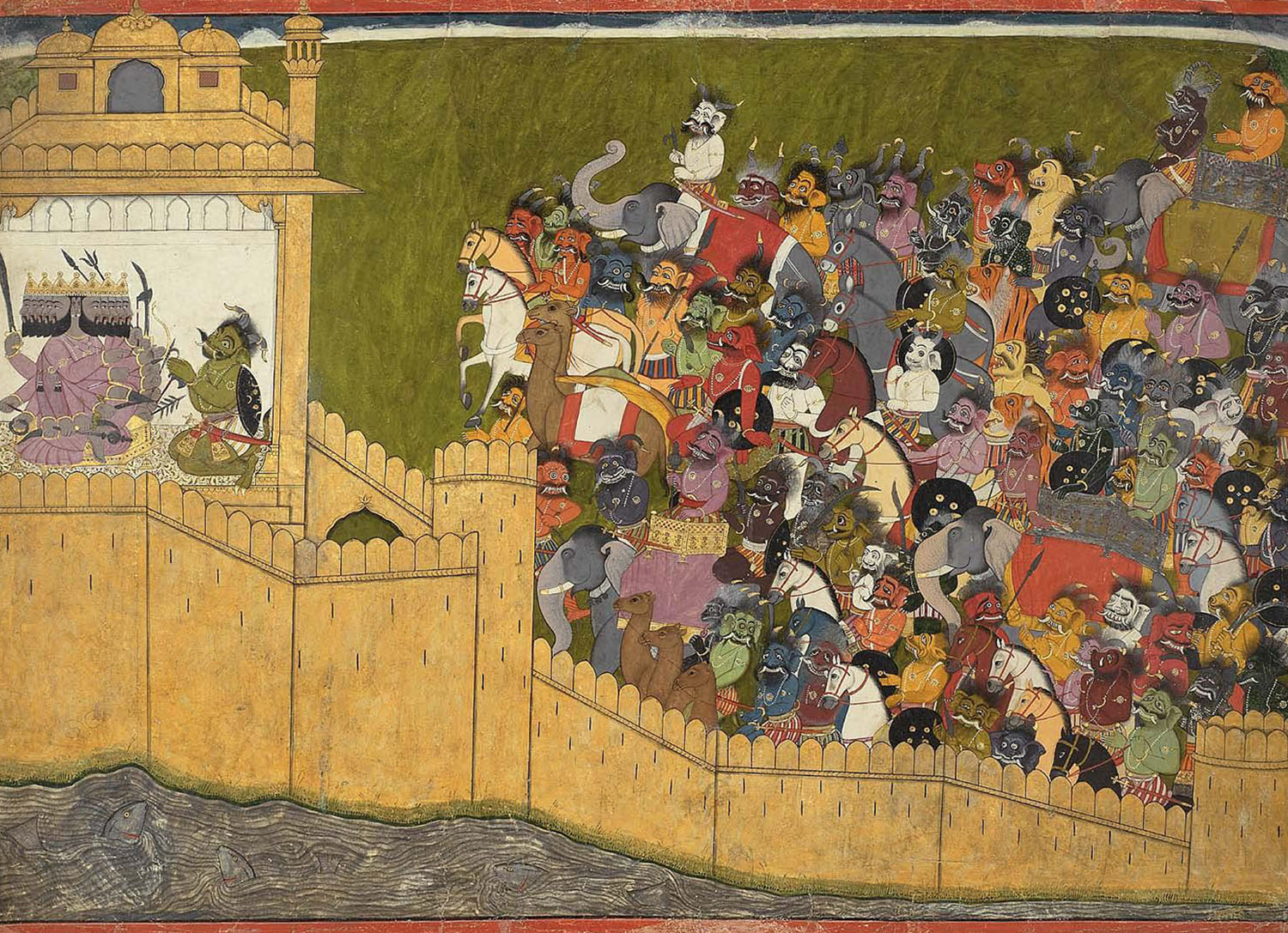ARTICLE
Manaku
A notable manuscript painter, Manaku worked in the courts of Guler and Basohli in the eighteenth century. Along with his father Pandit Seu and his younger brother Nainsukh, he helped shape the Pahari school of manuscript painting through his work.
While it is known that Manaku’s family was native to Guler, it is unclear how much time he spent working at Basohli, the relatively more lucrative court for local miniature painters at the time. Scholars speculate that he remained in Guler for most of his early life. A self-portrait made soon after a trip to Haridwar in 1936 includes a devotional mark on his forehead, suggesting he was a religious man, while another self-portrait, possibly made two decades later, shows him older and wealthier, as suggested by the bracelet on his wrist, which may have been a gift from a royal patron. The sporadic inscriptions on his paintings suggest that he lived and worked at both courts, possibly spending more time at Basohli, where he may have also passed away.
Manaku typically painted mythical and religious scenes, featuring deities such as Ram and Krishna, often incorporating elements from the natural landscape of the Punjab hills region. His earliest known work is a series of paintings on the Siege of Lanka in an illustrated Ramayana, which was begun by his father and completed by him in 1725. Another early work by him is an illustrated copy of the Gita Govinda, commissioned by Lady Malini in 1730, significant for being the first time the text was illustrated in the region. His work on both these texts shows a strong influence of his father, Pandit Seu, and what has come to be known as the early Basohli style of Pahari painting, notable for its high horizon line and flat landscape. However, his paintings do reflect some attempts to alter this style as well, such as the addition of a variety of trees and the use of the continuous narrative technique to segment a composition. In the case of the latter, the characters at the focus of the story are shown multiple times in the same painting at different stages of the narrative. Manaku’s paintings often feature a river in the foreground, a characteristic that scholars have noted as an identifying element of his work.
While the initial phase of his career shows Manaku following and developing the early Basohli style, the influence of his brother Nainsukh’s penchant for naturalism and compartmentalised compositions, along with his own innovations, set the stage for the Kangra style in the late eighteenth century. This change in style is reflected in a copy of the Bhagavata Purana, illustrated by him in 1750. Here, his characters have nuanced and varying facial expressions and are neatly placed in the space according to the architectural elements. A folio painted around the same time, depicting Krishna engaged in play with some cowherds and cows under a full moon, features a lowered horizon and a more naturalistic use of light and shadow. These experiments, however, are restrained and reflect in certain components of the paintings – for example, while minor characters are shown having different expressions and sometimes at a three-quarter angle, he avoids experimenting with the templated side profiles of important figures like Krishna.
Manaku’s two sons Fattu and Khushala, went on to become painters in the Kangra style, with the former’s work particularly influenced by that of his father.
Bibliography
Our website is currently undergoing maintenance and re-design, due to which we have had to take down some of our bibliographies. While these will be re-published shortly, you can request references for specific articles by writing to hellomapacademy@map-india.org.










